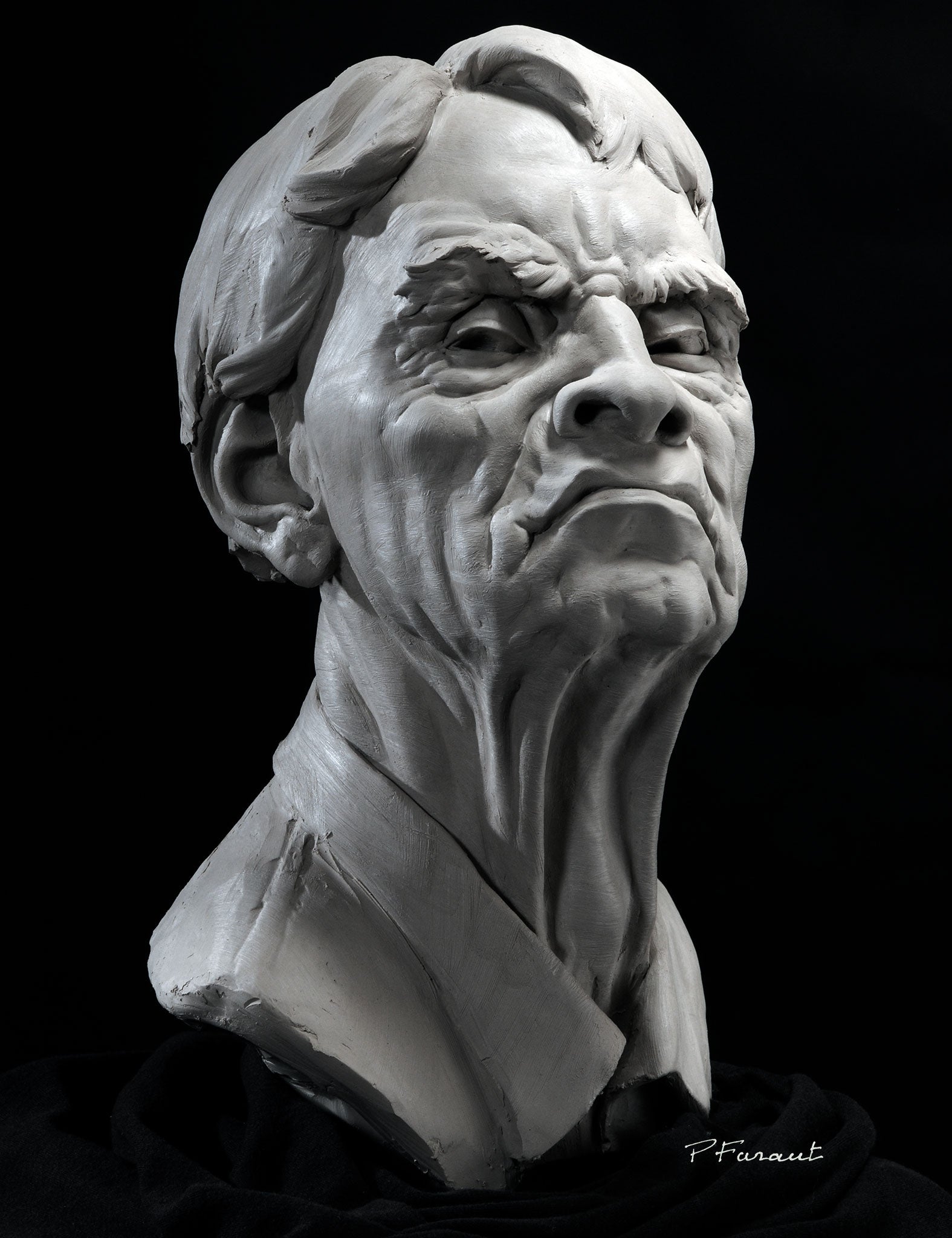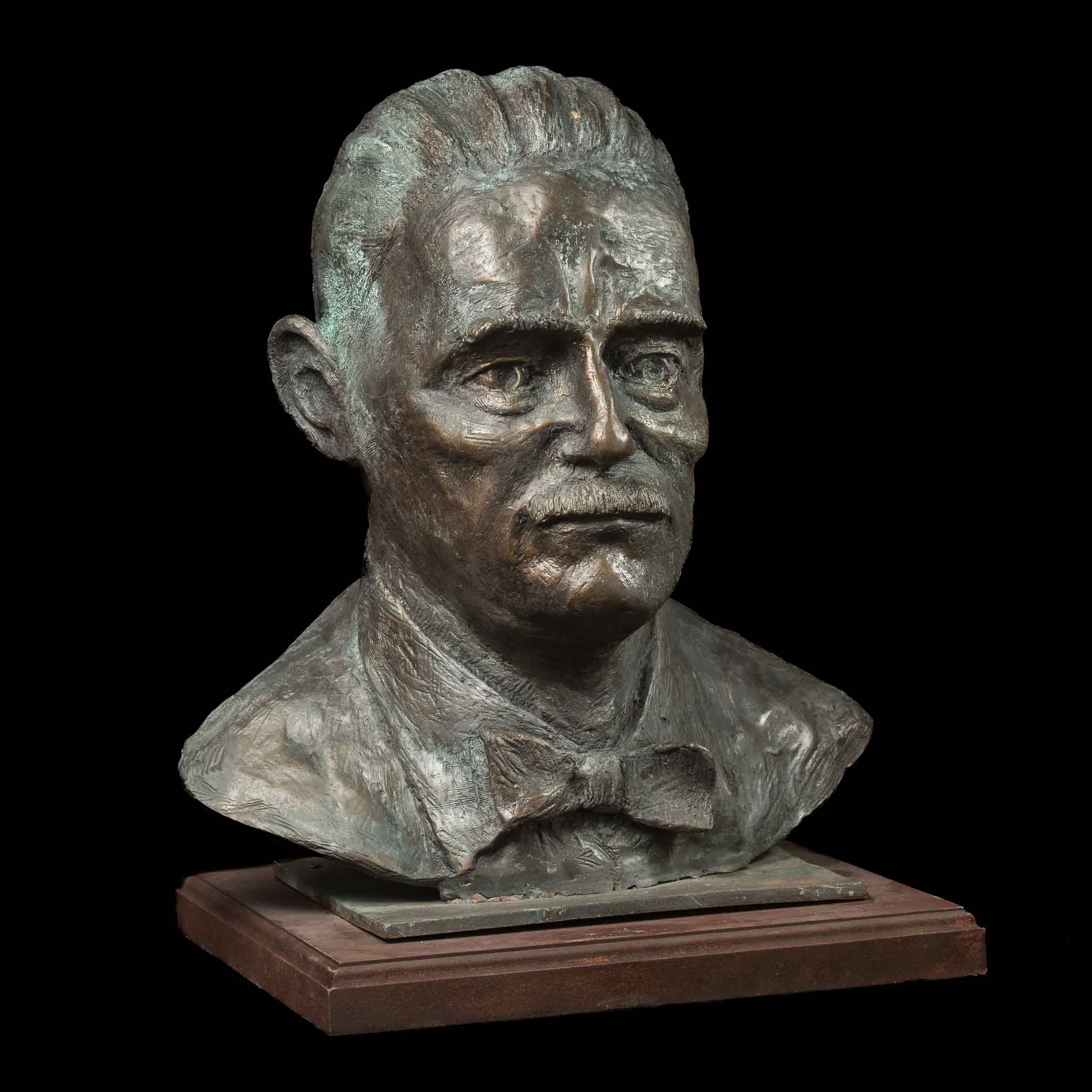Forming the Human Form: Representations of the Body in Sculpture
Forming the Human Type: Portrayals of the Body in Sculpture is an extensive exploration of the creative depiction of the body throughout background. This exhibit looks into the numerous strategies, designs, and social perspectives that have shaped the method artists have actually depicted the human type in sculpture. From the exquisite marble sculptures of ancient Greece to the intricate masterpieces of the Renaissance, from the elaborate and flamboyant Baroque and Rococo sculptures to the avant-garde and abstract expressions of contemporary and contemporary sculpture, this exhibition offers a captivating journey through the advancement of this classic art kind - Robert C Hitchcock Sculptor. By checking out the varied interpretations and representations of the body, visitors will certainly gain a deeper understanding of the imaginative, social, and social influences that have actually formed our understanding of the human kind.
Old Greek Sculptures

One of the defining features of Ancient Greek sculptures is their emphasis on balance. Each component of the body is meticulously crafted to be in proportion to the entire, developing a sense of balance and harmony. The artists paid mindful attention to every detail, from the placement of muscle mass to the positioning of arm or legs, ensuring that each figure showed up both powerful and graceful.
The Greeks likewise valued the principle of idyllic elegance. Rather than portraying the imperfections and problems of the human type, they sought to create an idyllic variation of truth. The sculptures frequently depicted professional athletes, sirens, and gods, with their bodies shaped to perfection. Robert C Hitchcock Sculptor. This idyllic portrayal of the human type not just well known physical elegance however likewise worked as a means of motivating and boosting the audience.
Renaissance Masterpieces
Continuing the expedition of the representation of the human form in sculpture, Renaissance masterpieces additionally refine the idyllic principle of elegance, building upon the harmonious and in proportion proportions of their Old Greek precursors. Throughout the Renaissance period, which covered from the 14th to the 17th century in Europe, musicians looked for to revitalize the classical ideals of ancient Greece and Rome. They studied and imitated the works of the ancient masters, pursuing a realistic depiction of the body.
Among one of the most prominent Renaissance artists was Michelangelo Buonarroti. His work of art, the sculpture of David, exhibits the excellence and poise that came to be identified with Renaissance art. Standing at over 17 feet tall, the sculpture portrays the biblical hero in a state of calmness before his battle with Goliath. David's muscular figure, recorded with extraordinary detail, exposes the artist's proficiency of human anatomy.
One more noteworthy Renaissance sculptor was Donatello. His sculpture of Saint George, created in the early 15th century, showcases the artist's ability to convey toughness and the aristocracy through the human form. The statuary illustrates the legendary dragon-slaying saint in a positioned and confident position, exhibiting a sense of heroism.
Renaissance masterpieces not only commemorated the physical elegance of the human body but also shared deeper emotions and definitions. With their precise interest to detail and proficient craftsmanship, Renaissance carvers elevated the art of sculpture to brand-new heights, leaving a lasting tradition that continues to motivate artists to this day.
Baroque and Rococo Sculpture
Baroque and Rococo sculpture exhibits the ornate and elegant portrayal of the human kind during the 17th and 18th centuries. Defined by its dramatic and vibrant design, Baroque sculpture intended to astound visitors through its splendour and psychological intensity. Artists such as Gian Lorenzo Bernini and Alessandro Algardi developed sculptures that conveyed motion, often illustrating numbers in dramatic positions. Making use of light and darkness even more improved the feeling of drama, producing a staged result.
Rococo sculpture, on the other hand, became a reaction to the grandiosity of the Baroque period. It accepted an extra delicate and spirited approach, concentrating on detailed layouts and attractive information. François Boucher and Jean-Baptiste Pigalle were popular Rococo carvers that crafted works defined by their sophistication and beauty. They usually portrayed numbers in elegant and sensual poses, mirroring the lighthearted and whimsical nature of the Rococo style.
Both Baroque and Rococo sculpture put an excellent emphasis on the human type, commemorating its elegance and expressing an array of feelings - Equine Sculptures. Whether it was the powerful and dynamic numbers of the Baroque or the stylish and captivating numbers of the Rococo, these sculptures caught the essence of the human experience, leaving a long-term effect on the art globe
Modern and Contemporary Sculpture
The advancement of shaping the human type proceeds in contemporary and modern-day sculpture. With the development of new products and strategies, artists have actually pushed the borders of representation, challenging conventional concepts of form and elegance. Modern sculpture emerged in the late 19th century as a reaction to the altering social and political landscape. Artists such as Auguste Rodin and Constantin Brancusi looked for to capture the significance of the human form, stressing emotion and activity. Rodin's "The Thinker" and Brancusi's "Bird in Area" are iconic instances of this duration.
In the 20th century, the increase of abstraction and theoretical art brought new possibilities for carvers. Musicians like Henry Moore and Barbara Hepworth discovered the partnership in between form and room, creating abstracted and natural numbers that tested traditional concepts of depiction. Moore's huge bronze sculptures and Hepworth's sculpted rock jobs are celebrated for their ingenious usage of products and their capacity to stimulate a sense of the human body in a non-literal way.
Contemporary sculpture remains to press the borders of depiction and explore brand-new materials and techniques. Musicians like Antony Gormley and Ron Mueck create hyper-realistic sculptures that test our perception of the body, while others, such as Louise Bourgeois and Kiki Smith, utilize the body as a metaphor for personal and collective experiences. The human type stays an effective subject in sculpture, providing a platform for artists to explore identification, feeling, and the human problem.
Social Point Of Views on the Body

In the exploration of sculpting the human type, the examination of social viewpoints on the body exposes a diverse and rich tapestry of analyses and representations. Throughout history, various cultures have held special beliefs and worths pertaining to the body, resulting in unique artistic expressions - Equine Sculptures. These social viewpoints shape the way the body is portrayed and regarded in sculpture, reflecting societal norms, spiritual beliefs, and visual ideals
For instance, ancient Greek sculptures celebrated the idealized human form, stressing physical elegance and athleticism. In comparison, view publisher site old Egyptian sculptures focused on the preservation of the body in the afterlife, portraying figures with inflexible stances and idyllic functions.
Similarly, social viewpoints on the human body in African art usually emphasize communal identification and spiritual ideas (Portrait Sculptor). Sculptures from various African societies illustrate the human body with overstated attributes, representing genealogical connections and social values. Indigenous societies in the Americas likewise have unique viewpoints on the human body, frequently depicting it in a spiritual context and stressing the connection in between people and nature
The examination of social perspectives on the body in sculpture enables us to gain understanding into the worths, beliefs, and visual appeals of various societies throughout background. It highlights the diversity of human experiences and the means in which art shows and forms our understanding of the human type.

Verdict
To conclude, the portrayal of the human body in sculpture has actually progressed in time, reflecting various social perspectives and artistic activities. From the idealized numbers of Ancient Greek sculptures to the realistic and stirring Renaissance masterpieces, and the intricate information of Baroque and Rococo sculptures, to the abstract and experimental kinds of modern and modern sculpture. The human body has been a subject of attraction and creative exploration throughout history, showcasing the varied interpretations and expressions of the human kind.
Shaping the Human Kind: Portrayals of the Body in Sculpture is a comprehensive expedition of the artistic depiction of the human body throughout background. From the beautiful marble sculptures of ancient Greece to the complex work of arts of the Renaissance, from the luxuriant and flamboyant Baroque and Rococo sculptures to the avant-garde and abstract expressions of contemporary and modern sculpture, this exhibition uses a captivating journey via the evolution of this classic art kind. Musicians like Antony Gormley and Ron Mueck develop hyper-realistic sculptures that test our understanding of the human body, while others, such as Louise Bourgeois and Kiki Smith, use the body as a metaphor for collective and personal experiences. The human kind remains a powerful topic in sculpture, providing a platform for artists to explore identity, feeling, and the human problem.
From the idealized figures of Ancient Greek sculptures to the practical and emotive Renaissance work of arts, and the intricate details of Baroque and Rococo sculptures, to the abstract and experimental types of contemporary and modern sculpture.